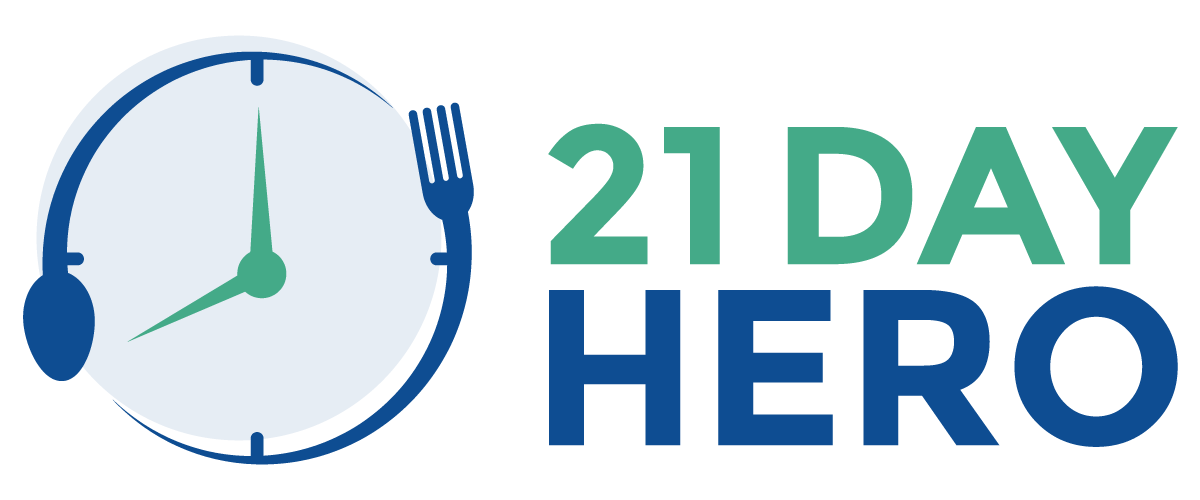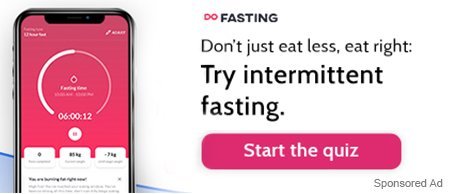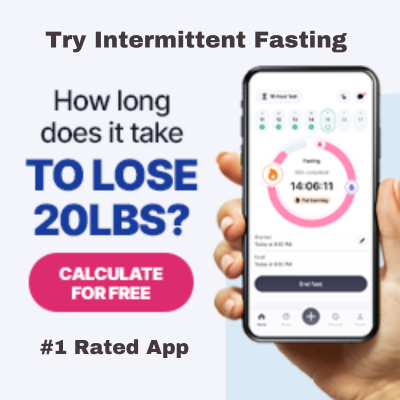What is Intermittent Fasting | Smoothies & Intermittent Fasting | Recipes for the Best Intermittent Fasting Smoothies
Have you ever made it to the end of your fasting window and realized that you didn’t want to jump right into solid food? After periods of fasting, some may or may not feel as hungry as they did right before going to sleep. Your digestive system may need to ease into solid food at the start of your eating window. This is where a smoothie can be a perfect addition to break your fast and start your eating window the right way! Let’s dive into The Absolute Best Intermittent Fasting Smoothies!
While drinking a smoothie will break your fasting period, it is a great way to begin your eating window. The best smoothies contain just the right amount of nutrient dense fruits and vegetables as well as protein to keep your blood sugar stable and feeling full for hours. Smoothies are a convenient way to include a variety of fruits and vegetables into your diet without too much planning or cooking.
Not sure what to put in your smoothie? We’ve got you covered with 3 recipes for delicious smoothies packed with plenty of essential nutrients to help you get started.
What is Intermittent Fasting?
Among today’s most popular wellness trends, intermittent fasting has been a game changer for many on their health journey. As opposed to strict diets that tell you what you can and can’t eat, intermittent fasting is simply a set number of hours where you consume all of your calories.
This is called your eating window. The rest of the time is spent in your fasting period where nothing can be eaten. Water and other beverages such as black coffee and green tea are permitted during fasting hours, however anything with a significant number of calories will break your fast.
Since caloric intake is limited to a specific number of hours (as opposed to eating anytime day or night), many people find themselves losing weight without keeping track of their calories. This is one of the reasons that intermittent fasting works for those who may not have had success on other diets.
There are many benefits to intermittent fasting outside of weight loss. Studies have shown improvement in areas such as insulin sensitivity, blood pressure, and hormone health in those that have followed intermittent fasting.
Although there aren’t any specific rules on what to eat while intermittent fasting, healthy foods are encouraged. This includes a diet primarily consisting of whole foods and limiting highly processed and sugary foods.
If you are looking for other foods to include in your intermittent fasting diet, check out this Intermittent Fasting Food List.

Smoothies & Intermittent Fasting
Since intermittent fasting is a schedule of when to eat and not what to eat, there can be a lot of questions surrounding the topic of what to eat while intermittent fasting. As mentioned before, smoothies are a great way to break your fast and start your eating window the right way. Not only are smoothies a nutrient-dense source for calorie intake, but they are completely customizable to fit individual needs.
If you are making smoothies at home, you may be wondering how to make the best smoothies. We will start with the basic categories to include for a balanced and healthy smoothie:
Protein
Greek yogurt, protein powder, or cottage cheese are great options to add more protein to your smoothies. Adding protein will help you to feel fuller longer and keep insulin levels from rising too quickly.
If you are using protein powder, make sure to opt for an unsweetened or low sugar option as there are plenty of protein powders on the market that contain significant amounts of sugar.
Liquid Base
A liquid base is one of the necessary components of a smoothie. The liquid base can be as basic as water, while other liquids may contribute to more nutrient-dense smoothies. Try a low-sugar liquid such as milk, coconut milk, or unsweetened almond milk. You might even consider using a bone broth if you are going for a more savory smoothie.
Fruits and/or Vegetables
Including a variety of fruits and vegetables is important in any diet. Choosing low-sugar fruits with greater fiber content (like berries) will not raise blood sugar levels as much as higher sugar fruits (like watermelon). Consuming berries as part of a balanced diet has been shown to reduce insulin resistance in those with diabetes.
Vegetables also make an excellent addition to smoothies, especially if you aren’t getting them as a regular part of your diet. Vegetables such as leafy greens, cooked beets, celery, and cooked carrots can be added to smoothies without compromising on flavor.
Healthy Fats
Nutrient-dense smoothies wouldn’t be complete without the addition of a healthy fat foods. Things like nut butters, chia seeds, flax seeds, pumpkins seeds, or avocados are an easy way to add excellent sources of fats like omega-3’s.
Sweetener (optional)
To enhance the flavor or make certain combinations of foods more palatable, some may choose to add a sweetener, for example Monk fruit, to their smoothies. This is totally up to personal taste, as the addition of fruits to a smoothie will already make the smoothie taste sweet. You can use a small amount of maple syrup, honey, or other sweetener of choice to add to your smoothies if needed.

Recipes for the Absolute Best Intermittent Fasting Smoothies
#1 Peanut Butter Protein Smoothie
Ingredients
- 1 cup low fat milk or dairy alternative
- 1 banana
- 2 tablespoons peanut butter
- ¼ cup old fashioned oats
- ½-1 cup greek yogurt
Directions
- Starting with liquid base, add all ingredients to the blender.
- Blend until smooth, about 1-2 minutes. Add extra liquid if too thick.
- Serve immediately and enjoy.
Why it’s good for you: Both the peanut butter and greek yogurt contain protein which makes this smoothie a high protein smoothie. Milk can be a good source of protein as well as some alternative milks such as oat milk or soy milk.
Protein amounts can vary among dairy alternatives, so it’s important to read the Nutrition Facts Label. Peanut butter is also a source of healthy fats. Oats are a good carbohydrate source that is full of fiber and minerals such as phosphorus, magnesium, and potassium.
*Tip: Take this smoothie to the next level by adding some cold black coffee to the smoothie to boost your energy levels. Bonus that it may taste like your favorite coffee drink!
#2 Tropical Green Smoothie
Ingredients
- 1 cup coconut water
- 1-2 scoops of unsweetened vanilla protein powder
- ½ banana
- ½ cup pineapple
- ½ cup mango
- ½ avocado (peeled and seed removed)
- 2 cups leafy greens (such as fresh spinach or kale)
- 1 tablespoon chia seeds
Directions
- Starting with liquid base, add all ingredients to the blender.
- Blend until smooth, about 1-2 minutes. Add extra liquid if too thick.
- Serve immediately and enjoy.
Why it’s good for you: Green smoothies can be a great way to get in those leafy greens, especially if you don’t care for raw salads. The banana, pineapple, and mango are rich in nutrients such as vitamin C, potassium, and vitamin A.
The avocado and chia seeds are rich in healthy fats, and the protein powder adds protein making this a balanced smoothie.
#3 Spiced Ginger Pumpkin Smoothie
Ingredients
- 1 cup unsweetened almond milk
- ½ cup canned pumpkin puree (NOT pumpkin pie filling)
- 1 teaspoon fresh grated ginger
- 1 banana
- 1 tablespoon apple cider vinegar
- 1 tablespoon almond butter or cashew butter
- 1 teaspoon pumpkin pie spice
- 1 teaspoon vanilla extract
- 1 tablespoon maple syrup (optional)
- Handful of ice cubes
Directions
- Starting with liquid base, add all ingredients to the blender.
- Blend until smooth, about 1-2 minutes. Add extra liquid if too thick.
- Serve immediately and enjoy.
Why it’s good for you: Did you know that pumpkin contains lots of essential nutrients and is full of fiber? That’s why it makes a great addition to smoothies all year! (And not just during pumpkin spice latte season). Pumpkin is high in vitamin A, vitamin C, and vitamin K.
Fresh ginger has anti-inflammatory properties which is beneficial for overall health. Almond butter and almond milk contain both healthy fats as well as some protein. The extra spices in this smoothie recipe make it both a delicious and healthy smoothie!

Conclusion – The Absolute Best Intermittent Fasting Smoothies
I love incorporating smoothies into my diet! They are easy to digest, and you can drink them on the go for amazing benefits. Be sure to pack your smoothie with a wide range of vitamins and nutrients. Feel free to mix and match ingredients for your personal taste.
As with any recipe, feel free to leave out or substitute anything based on your individual needs and preferences. The best thing about smoothies is that they are completely customizable and can be as nutrient dense as you want them to be, be sure to use healthy ingredients. Follow a healthy eating pattern, use nutrient-dense ingredients, and opt for fresh fruit for best results.
The options are endless when it comes to making a balanced smoothie. Just remember to add in a source of protein, healthy fat, and good sources of fruits and vegetables to get the most out of your smoothie. So, next time you are ready to start your eating window, break your fast with one of these delicious and healthy smoothies!
Check out – The best Intermittent Fasting Juice Recipes.
Also – What Can you Drink During Intermittent Fasting.












